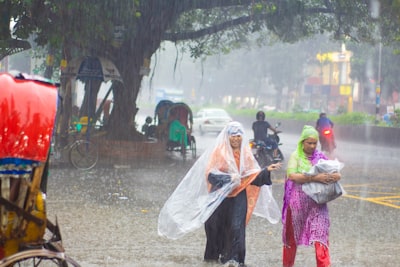Delhi’s Sudden Weather Change: What Residents Should Know
In recent days, Delhi has been experiencing sudden weather shifts, with heavy rainfall and gusty winds sweeping several neighborhoods. As unpredictable weather increasingly makes headlines, chances are you’re searching for the latest IMD weather updates, why such abrupt transitions are happening, and how to stay prepared. This article dives deeper into these trending issues to offer clear answers.
What’s Behind Delhi’s Sudden Weather Change?
The Indian Meteorological Department (IMD) frequently tracks and reports sudden weather changes in Delhi, attributing most events to:
- Western disturbances moving across north India
- Moisture-laden winds from the south
- Urban heat island effect increasing local temperature swings
Such conditions can cause:
- Isolated thunderstorms
- Heavy rainfall in patches
- Reduced visibility due to dust storms
- Power outages and traffic disruptions
Real-Time IMD Weather Alerts: Staying Informed
Understanding the role of IMD during unpredictable weather is essential. IMD provides timely weather alerts for Delhi through official sources, SMS services, and weather apps. You can:
- Check the IMD website for hourly updates
- Follow IMD’s social media channels for event alerts
- Subscribe to SMS alert services
Tip: Bookmark credible news outlets for real-time reporting on Delhi weather.
Monsoon Patterns in Delhi: What’s New in 2024?
With climate change, Delhi’s monsoon arrival and intensity have shown notable variations. Trending questions among residents include:
- When will monsoon arrive in Delhi this year? According to IMD, onset predictions point to early arrival but fluctuating patterns.
- Are sudden storms and rain normal? Increasingly, yes—studies show urbanization amplifies extreme weather episodes.
How to Stay Safe During Sudden Storms and Heavy Rainfall
- Secure loose items: High winds may turn debris or loose objects into hazards.
- Stay indoors: Avoid travel when IMD issues a red/orange alert.
- Flood readiness: Move valuables to upper floors and unplug electronics during heavy rain.
- Traffic safety: Monitor local traffic advisories—the risk of flash flooding and fallen trees is higher during such events.
FAQ: Delhi's Sudden Weather Events
Q: Why do some Delhi areas get more rain than others? A: Microclimatic conditions, city structure, and wind direction can produce highly localized storms.
Q: How can I receive weather alerts? A: Register for IMD alerts via its website/SMS system or use a trusted weather app.
Q: What is a yellow/red/orange alert? A: These are IMD’s warning levels, with red being the most severe—signal heightened risk of disruption.
Key Takeaways
- Sudden weather changes in Delhi are increasingly common—IMD updates are critical for timely information.
- Understanding monsoon patterns helps residents be better prepared.
- Always follow IMD advisories and practice seasonal safety tips.
For the latest, check authoritative sources regularly, and remember that weather unpredictability is part of a growing global trend influenced by climate change and urban growth.
This article was inspired by the headline: 'दिल्ली में अचानक बदला मौसम, कई इलाकों में तेज आंधी और बारिश, IMD का क्या अपडेट - Hindustan'.

Comments
No comments yet. Be the first to comment!